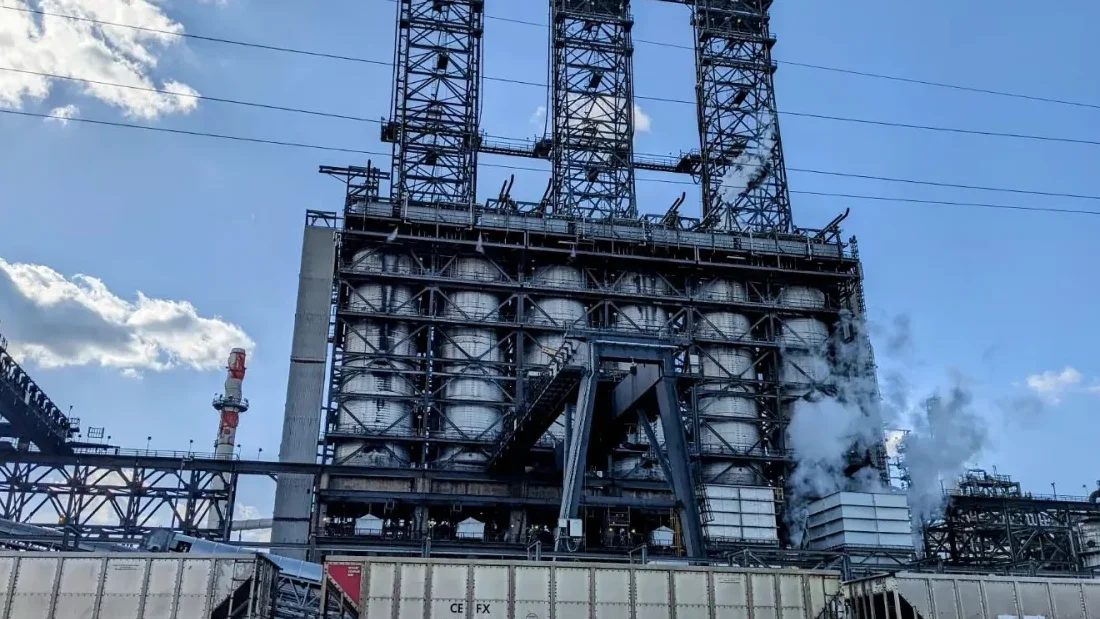
HYDROGEN: Indiana advocates worry that federally funded plans to create a Midwest hydrogen production hub built around natural gas and carbon sequestration could perpetuate local pollution. (Energy News Network)
NUCLEAR: The Biden administration is reportedly preparing to offer a conditional $1.5 billion loan to reopen a shuttered nuclear plant in southwestern Michigan. (Reuters)
MINING: A Michigan panel delays voting on a $50 million grant for a copper mining project in the far western Upper Peninsula, which the developer says would provide key materials for electric vehicles. (Bridge)
PIPELINES:
ELECTRIC VEHICLES: A new report finds electric vehicles account for about 4.5% of new vehicle sales in Indiana, which is less than half the national rate. (Times of Northwest Indiana)
COAL: More than $3.1 million in federal funding is available this budget cycle to reclaim abandoned coal mines in North Dakota. (KXNET)
SOLAR: Two small manufacturers in Missouri receive a total of $90,000 in federal funding for onsite solar installations. (KBIA)
ELECTRIFICATION: A coalition of Minnesota advocacy groups seeks participants to help draft a roadmap for expanding home electrification as a climate strategy. (Spokesman-Recorder)
TRANSPORTATION: Michigan officials begin surveying residents on their attitudes toward replacing a gasoline tax with a road usage charge as more fuel efficient and electric vehicles are adopted. (WOOD-TV8)
GRID: Ameren completes upgrades to a 140-mile transmission line that utility officials say will improve reliability for seven southern Illinois counties. (KFVS)
CLIMATE: A community mapping project supported by NOAA scientists identifies the urban cores of Cedar Rapids and Iowa City as more vulnerable to dangerous heat than surrounding areas. (Gazette)

WIND: Dominion Energy receives the final two federal approvals for its $9.8 billion 176-turbine offshore wind farm near Virginia, opening the way for the utility to begin construction in May. (Virginia Business)
ALSO:
OIL & GAS:
EMISSIONS:
GRID: The Texas Supreme Court hears arguments over state regulators’ decision to raise energy prices to their maximum allowable levels to incentivize power production during the 2021 winter storm. (KUT)
ELECTRIC VEHICLES:
SOLAR: An energy company announces it’s obtained financing to move forward with a 600 MW solar farm in Texas. (Solar Industry)
UTILITIES:
COAL:
COMMENTARY:
Correction: Oil companies will pay $7.4 million to settle a pipeline spill on Sac and Fox Nation land in Oklahoma. Yesterday’s edition of Southeast News included the wrong amount.

UTILITIES: Xcel Energy’s latest long-term energy plan would keep its two Minnesota nuclear plants until the early 2050s and add 3,600 MW of renewables, 600 MW of storage and two new gas plants. (Star Tribune)
OHIO: Lt. Gov. Jon Husted says any provisions linked to the state’s scandal-tainted House Bill 6 should be repealed, exposing an ongoing divide among Ohio Republicans over how much of the law should remain in place. (WCMH)
TRANSPORTATION: A Minnesota work group recommends making refineries buy credits that would fund grants to clean fuel producers, but environmental groups oppose the inclusion of ethanol among beneficiaries. (Star Tribune)
GRID:
PIPELINES: North Dakota regulators are set to vote next week on when state rules preempt local ordinances on pipeline zoning issues. (North Dakota Monitor)
SOLAR: Researchers are piloting a roadside snow fence with 6-inch-wide solar panels along a Minnesota highway. (MPR News)
HYDROGEN: Critics say utility plans to burn hydrogen for electricity at natural gas plants as a way to cut emissions would be a costly distraction from pursuing other technologies. (Canary Media)
POLITICS: Missouri Democrats grill Secretary of State Jay Ashcroft for requesting $1.2 million in public funding to defend his legal fight against environmental, social and governance driven investing. (St. Louis Post-Dispatch)
ELECTRIC VEHICLES: A Minnesota company begins producing electric fire trucks that can get up to 150 miles on a charge and include new safety features for operators. (WCCO)
OIL & GAS: A power outage Thursday at a Northwest Indiana oil refinery caused significant flaring and will likely increase gas prices in the near term. (WLS)

CLEAN ENERGY: Analysts and advocates urge clean energy developers to consult with tribal nations early in the planning phase and earn their support rather than risk expensive legal challenges later in the process. (Grist)
CLIMATE: Proposals to mitigate the effects of climate change with solar geoengineering could infringe on tribal nations’ sovereignty, Indigenous advocates say. (High Country News)
SOLAR:
WIND: Oregon lawmakers call on federal agencies to address their concerns about proposed offshore wind development along the state’s southern coast. (Cannon Beach Gazette)
COAL: Utah lawmakers advance a bill aimed at keeping a coal plant running long after its scheduled retirement date, even if it means taxpayers end up purchasing the 40-year-old facility. (Salt Lake Tribune)
POLITICS: Utah Gov. Spencer Cox signs a bill into law aimed at allowing the state to sidestep federal regulations it deems objectionable, such as the U.S. EPA’s “good neighbor” ozone pollution reduction rule. (Deseret News)
OIL & GAS:
GRID: Unusually extreme cold grips south-central Alaska, straining natural gas supplies and leaving thousands of households without power. (Anchorage Daily News)
ELECTRIC VEHICLES:
COMMENTARY:

Clean energy is aligned with conservative values. So says North Carolina Rep. Kyle Hall, a Republican legislator in his fifth term from a small town near Winston-Salem.
“It’s conservative to support market competition, consumer savings, property rights, and innovation,” Hall said at an event last November, when he received an award for spearheading a bill to promote rooftop solar and other clean energy measures in 2023.
The event also showcased what pollsters have known for years: Energy independence, less pollution, economic development, and other aspects of clean energy are popular with voters across the political spectrum.
Still, last year’s defeats and half-wins in North Carolina – where Republicans control both houses of the state legislature – show those factors aren’t always enough to propel policies favoring solar, wind, and electric vehicles forward. Obstacles remain in this purple state, including powerful special interests, misinformation, and individual lawmakers who have the power to make or break legislation.
“Polling consistently shows overwhelming public support statewide — in every community and across political ideologies — for more clean energy and for freer energy markets,” Carson Butts, the director of Conservatives for Clean Energy North Carolina, said in an email. But, he acknowledged, “clearly, we have more work to do.”
Advocates like Butts believe they’re making progress in winning Republicans over to their cause, and there’s evidence for that.
In 2013, for the first time in over 100 years, the North Carolina GOP assumed control of the governor’s mansion and both chambers of the General Assembly. Members of their ranks immediately sought to weaken clean energy policies, with some success. Today, state-level solar tax incentives are gone, and land-based wind turbines are scant albeit legal.
But strong bipartisan support for clean energy also started to congeal, culminating in 2021, when the legislature and a Democratic governor elected in 2016 crafted a law to zero out electricity sector carbon emissions by midcentury. It remains the only such bipartisan measure in the region.
John Szoka, who helped write that law, may be the greatest testament to the efforts of right-leaning clean energy advocates. A former legislator who took office the first year of the GOP trifecta, today he leads the Conservative Energy Network, a nationwide association of state-based groups like Conservatives for Clean Energy.
“I’m the perfect example,” Szoka said in an interview, about how conservatives can evolve through education.
“When I first ran for office, I thought solar only existed because of subsidies and a bunch of crazy stuff,” he said. “But then, I ended up being a proponent for it. I made the transition because I had people who are trusted conservatives tell me what the truth was.”
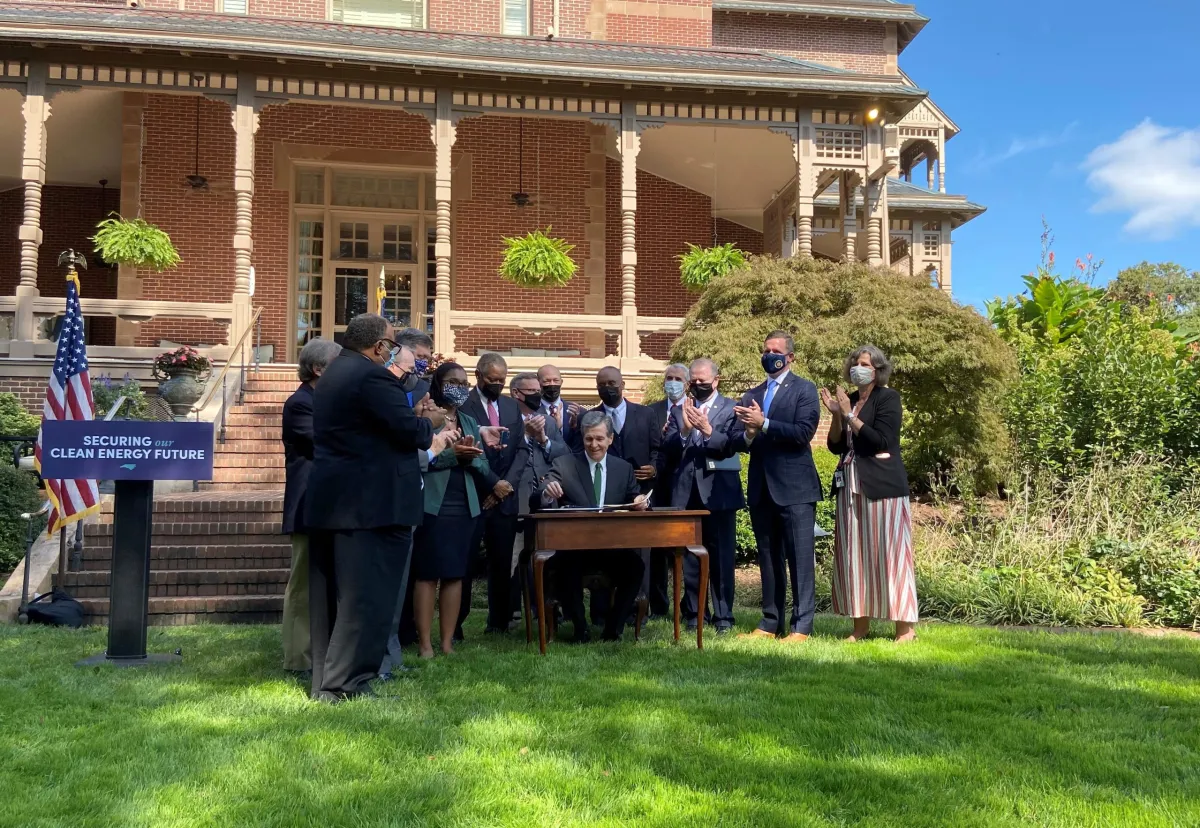
Though Republicans regained a legislative supermajority in 2022, the bipartisan emissions law faced no attacks last year. A largely symbolic measure to ban ocean-based wind turbines in state-controlled waters also never got a hearing.
“Sometimes we define success as something that didn’t happen,” said Brian Turner, a former Democratic state representative who now directs policy for Audubon North Carolina. “We didn’t get another wind moratorium,” he noted at a November energy conference. “That’s something we were able to bottle up and keep from moving.”
What’s more, Republicans allocated at least $10 million in matching funds for an avalanche of clean energy grants headed to North Carolina thanks to federal initiatives like the 2021 Bipartisan Infrastructure Law.
“There was significant funding allocated for clean energy related items, and that wasn’t necessarily a given,” said Cassie Gavin, policy director at the North Carolina Sustainable Energy Association. “Every state hasn’t done that.”
Rep. Hall also moved to raise the current cap on leasing rooftop solar from 1% of Duke Energy electricity sales to 10%, a key change for businesses and nonprofits looking to rely more renewable energy. After paring down the scope of the bill to satisfy Duke, it cleared the house with just 10 “no” votes — a milestone he called significant.
“Being able to carry it through,” Hall said in an interview, “I think was kind of a victory.”
This activity aligns with poll after poll showing that voters across the political spectrum support wind, solar, and other forms of clean energy. Last year, a trio of surveys continued that trend.
The left-leaning North Carolina League of Conservation Voters found divisions between conservative and liberal voters on fossil fuels, but strong majorities in favor of “solar energy,” “clean energy,” and “renewable energy.”
Szoka’s group found that 67% of voters support community solar — in which individuals pay in for a share of a large solar farm — including 59% of Republicans.
And Conservatives for Clean Energy found that 73% of voters, including a majority of Republicans, would be more likely to support a candidate who backed policies to encourage “wind, solar, and waste-to-energy technologies.”
Consultant Paul Shumaker conducted the latter poll, a survey of 500 North Carolina voters last spring. In terms of running election campaigns, he said during a presentation of the results, “anything over 70% is a winning issue.”
But lawmakers didn’t always heed these surveys.
Shumaker’s poll, for instance, found that more than three quarters of voters, including 72% of Republicans, favored more competition in the electricity market.
Slightly smaller majorities said they would support “current legislation that would authorize a study to examine the public benefits of restructuring options for the generation, transmission, and distribution of electricity in North Carolina.”
The question references House Bill 503, aimed at analyzing the pros and cons of Duke joining a competitive wholesale electricity market, among other reforms. Like similar measures introduced in 2019 and 2021, it saw no movement last year.
“With the overwhelming numbers of voters supporting competition, why can’t we even study it?” asked Kevin Martin, the director of the Carolina Utility Customers Association, after the presentation.
“That’s a question for lawmakers,” Shumaker answered. He then relayed an adage he said came from the late historian David McCullough: “Special interests drive the narrative.”
Duke has a long public record of opposing the market reform study and did not respond to a request for comment for this story. But it wasn’t the only special interest that influenced policy last year.
The state budget prohibited an effort by Gov. Roy Cooper, a Democrat, to reduce pollution from the state’s transportation sector. Called the Advanced Clean Truck Rule, it would have required manufacturers to sell increasing percentages of electric heavy-duty vehicles.
The provision originated in the House and endured when the Senate passed its version of the state spending plan. Still, Hall said he fought to remove it in conference — to no avail.
“That sent a signal to electric vehicle companies across the country that you’re not welcome in North Carolina,” Hall said.
The source of the provision, Hall believes, was the North Carolina Chamber, the business lobby that represents a host of companies including truck makers Daimler Truck and Volvo Group. “They wanted that in the budget,” he said, “and like Duke Energy, they wield a lot of power.”
The Chamber celebrated the budget language on its website in September. “Government mandates and intervention into the market would stifle… innovation and investment, as well as increase costs in new trucks, on which nearly all of our members rely,” it said.
The lesson, said Hall, is that companies with a vested interest in clean energy policy — in this case manufacturers and fleet managers who want their companies to go electric — need to do a better job of educating both lawmakers and the trade groups they belong to.
“Groups like Duke and the [electric] co-ops are doing it,” Hall said. “This side of the energy sector needs to do it as well.”
Still, the clean energy economy remains nascent compared to the entrenched business interests that benefit, at least in the short term, from the status quo. That was certainly true last year, when the well-organized building lobby faced off against the more diffuse energy efficiency industry.
State standards for insulation thickness, window quality, and other energy-saving building features in new single-family homes have remained virtually unchanged for over a decade.
The state’s Building Code Council sought to change that, tying updated standards to a 2021 international model code. The move was expected to add an average of $5,000 to the cost of a new house but generate a positive cash flow immediately by lowering energy bills.
The math was generated by an independent government lab and confirmed anecdotally by green builders, who supported the code updates. But the powerful North Carolina Home Builders Association refused to accept it. A major campaign donor and presence in the legislature, the builders lobby instead claimed the average cost would exceed $20,000.
With the state in dire need of affordable housing, the builders’ reasoning was potent – convincing several Democrats and every single Republican to vote for a measure to reject the update and freeze the 2009-era codes in place until 2031.
“We do have an affordable housing crisis,” said Hall, a realtor by trade who’s observed soaring home prices even in his small town of King. And if the builders had less “burdensome regulations,” he said, they could build homes more cost-effectively. “I think that was a compelling argument.”
Special interests aren’t the only ones with sway in Raleigh. Sen. Paul Newton, a Cabarrus County Republican and former Duke Energy North Carolina president, is widely viewed as the arbiter of clean energy policy for the Senate.
A lead negotiator for the 2021 decarbonization law, his positions frequently align with Duke’s. But he also asserts himself on bills that don’t directly concern the utility, and his influence extends beyond his chamber.
For four years in a row, he was thought to be the sticking point for government building efficiency legislation — a measure with no organized opposition and few detractors in the House. The 2023 Conservatives for Clean Energy poll found the measure had 79% support, including 68% of Republicans. Last year, the measure was reintroduced in the House with bipartisan support, but never got a hearing.
Newton’s key imprint from 2023 was his bill to promote nuclear, a carbon-free but non-renewable power source. The measure is more message than substance, but one key provision removes a requirement that Duke pursue more cost-effective measures like energy efficiency and renewables before trying to build a new nuclear plant.
“We support energy efficiency as the most affordable energy resource, and so we remain concerned about the changes to the [Certificate of Convenience and Public Necessity] section,” said Gavin of the Sustainable Energy Association.
When the bill first cleared the House, it included language sought by Hall to increase the solar leasing cap. That provision was rejected by Newton and other senators in the conference committee between the two chambers. “The Senate just stood their ground,” Hall said, “and flat out said ‘no.’”
Though his solar leasing bill is still eligible this year, Hall lamented its failure to become law in 2023. “That’s probably the most disappointing thing from the session,” he said.
Dan Crawford, director of governmental relations with the North Carolina League of Conservation Voters, said the situation was indicative of the dynamic on energy policy at the General Assembly.
In the House, “you have conservatives that are trying to lead and do something positive,” he said. “But then you have the Paul Wall in the Senate.”
Newton didn’t respond to a request for a comment for this story.
Along with Hall, many observers point to Rep. Larry Strickland, a Johnston County Republican in his fourth term, as an emerging leader on energy in the House.
But they also note the absence of Szoka, who left in 2022, and former Republican representative Chuck McGrady, who now sits on the state’s Board of Transportation.
“Those are two really big losses,” Crawford said.
Szoka says one reason Republicans don’t always seem to follow the will of the majority of voters traces back to conservative grassroots circles.
Of the GOP voters his group polled who self-identified as “more conservative” on energy than their party as a whole, a whopping 64% said there was either no reason to be concerned about climate change or that more research was needed.
“So, that raises a question,” Szoka said. “How do you get elected? What’s going on in Republican grassroots organizations? Where do they get their information from?”
While outlets like Fox News have largely abandoned outright climate denial, misinformation persists about climate science, renewable energy sources, and energy policy. Throughout much of last year, for example, conservative media amplified false claims that offshore wind development was killing whales along the Atlantic Coast, an analysis by the liberal group Media Matters found.
Former president Donald Trump also trumpets such falsehoods, deepening distrust of the clean energy transition among Republican voters. And numerous studies have shown social media algorithms tend to push some users toward conspiracy theories and other misinformation.
At the same time, activists fighting solar, wind, and transmission projects, sometimes backed by fossil fuel interests, sow untruths in otherwise receptive or neutral rural communities.
“That stuff is still prevalent in a lot of rural areas, because there are people who actively work against clean energy, and they perpetuate misinformation,” Szoka said. Debunking it — a key mission of his organization — takes time and patience, he said, but it can work. “You’ve got to convince them,” he said, “and separate fact from fiction.”
Even so, with districts increasingly gerrymandered for partisan advantage, Republican candidates who support clean energy may never campaign on it: it doesn’t necessarily help them win a primary, and it rarely distinguishes them from their Democratic opponents.
“Most people don’t talk about it enough,” Szoka said, especially considering clean energy’s importance to unaffiliated voters – now the largest cohort in the state’s electorate. “And in some of these tight races, conservatives should talk about it more and the race wouldn’t be quite as tight.”
Still, advancing the clean energy transition may not be a simple matter of translating popular polling issues into policy. As politics becomes more nationalized and more polarized, with top Republicans deriding wind and solar, there’s some evidence that voters could be following suit.
Conservatives for Clean Energy has conducted polling for eight years. In 2015, nearly 87% of voters were more likely to vote for candidates who supported wind and solar. But that figure has seen a steady, if slight, decline ever since, and last year reached a new low of 73%.
The fossil fuel industry has also likely benefited from the centuries-old term “natural gas,” which despite its coinage describes a fuel that contributes substantial heat-warming pollutants to the atmosphere.
While most voters in the Conservative Energy Network poll believe we should put “less emphasis” on developing coal and oil, most said production of natural gas should stay “about the same.” Similarly, the North Carolina League of Conservation Voters poll found that 68% of all voters, including 55% of “left-leaning voters,” had a favorable view of natural gas.
Hall, who doesn’t advocate a full transition to “things like solar and wind,” believes the key is focusing on not just economics, but independence.
“If you ask people, ‘do you want to be energy independent, or do you want to rely on China and Russia for your energy,’ everybody’s going to vote for America first,” Hall said. “When I speak to constituents, their number one concern is that when they flip the switch that the light turns on — and if you could do it cheaper, cleaner, and made right here in America, that’s what they care about.”
Some way or another, clean energy advocates on the right are going to have to figure out what works. For all the intrigue in this year’s elections, legislative district lines leave little doubt that Republicans will retain control of the General Assembly. And left-leaning advocates say they’re not the best messengers in that case.
“There is an important role for Conservatives for Clean Energy to be that validator on the economy and clean energy,” Crawford said.
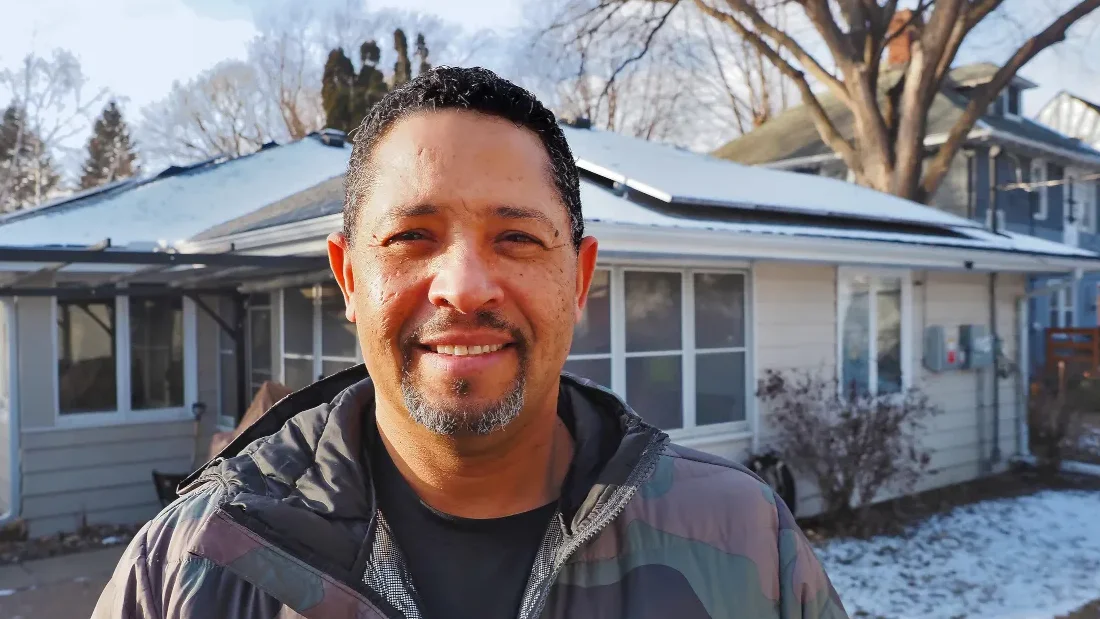
One installation at a time, a solar nonprofit that matches socially conscious investors’ cash with lower-income homeowners is spreading the benefits of solar in North Minneapolis.
Solstar was formed three years ago by solar entrepreneur Ralph Jacobson following his retirement from IPS Solar, the pioneering Twin Cities’ solar company he founded three decades ago earlier.
In his entire career, “I hardly ever had Black customers or Black subcontractors,” Jacobson recalled.
Solstar is a collective effort for clean energy leaders in North Minneapolis to address those racial disparities.
Jacobson, 71, works his network to persuade wealthy individuals to invest in residential solar installations. Kristel Porter, a well-known community activist, recruits low- or moderate-income homeowners who are interested in having solar on their homes. J.T. Thomas of the Black-owned Go Solar Construction trains and supervises students who help install the projects.
Solstar takes care of applications for all of the available incentives. Homeowners pay nothing and immediately benefit from a lower monthly electricity bill.
“It’s a no-brainer,” said Jacques Beech, who signed up with Solstar and now has solar panels on the roof of the 2,700-square-foot ranch home he shares with his wife and two kids.
His electricity bill so far has dropped by around $100 a month.
The model is working, though slower than Solstar’s founders would have hoped. The nonprofit initially wanted to finish 24 projects in its first two years. Instead, it’s completed ten and expects to hit the two dozen mark later this year.
“We found it has been harder than expected and needed a different skill set,” Jacobson said.
Among the challenges were managing investors, timing projects around incentives, convincing skeptical homeowners the offer wasn’t too good to be true, and keeping trainees employed in the still sporadic industry.
Solstar’s financing is complex. The nonprofit pays for installations by attracting investors and offering them a modest rate of return. Three major equity investors take advantage of the tax credits and depreciation on the projects. Solstar’s microlenders do not get tax credits but instead receive 3.5% on investments ranging from $5,000 to $50,000.
Solstar investors reduce their taxes by taking advantage of the 30% tax credit and a six-year depreciation schedule on solar projects. After exhausting tax incentives, Solstar plans to sell the solar systems to their commercial and residential customers at a significantly reduced price. Clients hosting Solstar panels on their roofs receive discounts on their electricity by as much as 20% and, in some cases, more.
Jacobson reduces his costs by taking advantage of other programs. Every project is sized up to 120% of the client’s electricity use, the highest amount allowed under Xcel Energy’s Solar Rewards incentive program. Solar Rewards pays more per kilowatt hour for participating low-income households. A production incentive from the city of Minneapolis’s Green Zone program adds another layer of support.
None of this is easily absorbed by investors or clients. Jacobson quickly discovered interested investors, but many would require multiple conversations and several weeks of consideration before betting on his new program.
Eventually, crowdsourcing cash paid off. “I certainly developed a bit of a following, a little community of maybe 70 to 75 people, who have put money into these projects,” he said.
One of those is Eric Pasi, a former partner at IPS Solar who now runs the community solar company Enterprise Energy. He saw an opportunity to move solar beyond helping reduce energy bills of middle- and upper-class clients to a BIPOC mixed-income neighborhood.
“We love projects like this because for a modest investment the impact for these projects is so great,” said Pasi, who is also a board member of Fresh Energy, which publishes the Energy News Network.
After Solstar began knocking on doors of North Minneapolis residents in early 2021, Jacobson discovered the annual budget for Xcel’s Solar Rewards program had already run out of money for the year. Porter kept marketing Solstar and speaking to potential clients to prepare installations for 2022 and 2023.
The Solar Rewards issue was just the start of problems. “I didn’t realize we were going to run into as many potholes as we ended up running into,” Porter said.
Some homeowners sat on the fence, not making a final decision for months. At least four who signed up in 2023 delayed solar projections because they needed new roofs after an August hail storm.
Trying to pay professional contractors and their trainees became expensive and “tricky and financially just too much,” Porter said.
Solstar eventually broadened the contractor pool beyond Go Solar to finish projects within the Solar Rewards deadlines. If a project does not meet deadlines, Solstar would have to reapply for Solar Rewards the following year “and go through the whole process again,” Porter said.
Other projects were slowed when Xcel laid off several employees who were familiar with Solstar and its model.
Solstar’s job training pipeline has also run into hurdles. Thomas onboards students from training programs offered by the city of Minneapolis and partnering institutions such as the Regional Apprenticeship Training Center. Four students who received classroom training then worked with Thomas on Solstar projects.
Some students struggle with getting transportation to installation jobs, he said. Training is often scheduled so far in advance that job opportunities may not be immediately available when students finish their classes.
Many students can’t spend a month or two waiting for a job, Thomas said, and when a job emerges, they may not be available because they are already working.
“It’s taken a while to ramp up, but now it seems like the jobs are trickling in and we’re getting the processes down,” he said. “Hopefully, as we go on to it next year, it will be a little more seamless.”
Still, according to attorney Jeremy Kalin, the program’s approach and hard-won success means that other nonprofits could use the same approach. His firm, Avisen, has worked with similar programs in Maryland and others are starting in Arizona, Georgia and New Mexico.
The difference between Solstar and those initiatives is that Jacobson recruited wealthy investors who could take advantage of the tax credits and depreciation. Nonprofits in other states will use the Inflation Reduction Act’s “direct pay” option rather than rely on investors. The act allows nonprofits and government agencies to receive tax credits as cashback from the IRS.
Nonprofits using direct pay did not have a way to “monetize the depreciation deduction,” but “they have a simpler task because finding tax credit investors with the right kind of taxable income is hard,” Kalin said.
Jacobson has not determined whether Solstar will continue the same structure or lean into direct pay. He said several early investors in Solstar and a separate initiative he helps lead in the Red Lake Indian community want to continue participating in Solstar.
Early customers like the program. Beech said he would have never made such a significant investment with such a long payback without the program. “It’s not a cost-effective thing, unless you just have the money, which I don’t,” Beech said. “This is an affordable way to do it.”
After completing the first iteration of Solstar, Jacobson wants to start another limited liability company and start recruiting 24 more homes and small businesses. “If White people can build wealth by owning solar, then I guess Black people should be able to build wealth by owning solar, too,” he said.
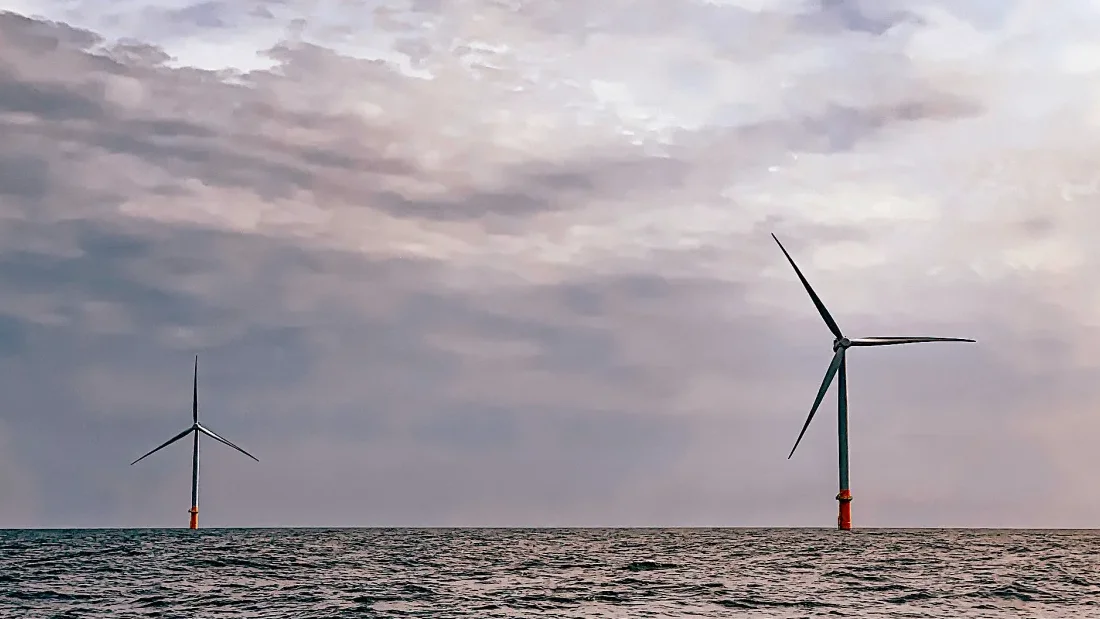
WIND: The Biden administration awards a northern California county $426.7 million to fund development of an offshore wind turbine assembly, construction and maintenance terminal. (Times-Standard)
SOLAR:
UTILITIES:
OIL & GAS: Alaska Gov. Mike Dunleavy calls on the state legislature to allocate another $4.5 million to boost a proposed liquefied natural gas pipeline and export project, but lawmakers are skeptical of the plan’s viability. (Northern Journal)
COAL:
ELECTRIC VEHICLES:
GEOTHERMAL: A Hawaii lawmaker proposes tackling rolling blackouts by tapping active volcanoes for geothermal power. (KHON2)
GRID:

OFFSHORE WIND: New Jersey regulators approve two new offshore wind farms as part of the state’s third solicitation: the 2.4 GW Leading Light and the 1.34 MW Attentive Energy 2 projects. (E&E News, Offshore Wind Biz)
ALSO:
POLICY: The question of how to pay for Maryland’s “comprehensive” climate plan is sure to be discussed during this upcoming legislative session, with no clear or easy answers in sight. (Maryland Matters)
CLIMATE:
MINING: A Pennsylvania nonprofit receives what is thought to be the largest grant the state has dispersed for abandoned coal mine cleanup, for a project near the Nanticoke Creek in the state’s northeast. (Bay Journal)
TRANSIT:
SOLAR:

CLEAN ENERGY: States bring in hundreds of millions of dollars each year in fossil fuel revenues, paying for schools and roads that will need to find other funding sources as states transition to renewables. (Axios)
EQUITY: As many as 1.5 million U.S. families could lose access to home heating assistance funds if Congress doesn’t include an additional $2 billion in aid in next year’s budget. (The Hill)
CLIMATE: House Republicans argue that the SEC’s upcoming rule requiring businesses to submit climate-related disclosures oversteps the agency’s authority based on a recent Supreme Court ruling. (Utility Dive)
NUCLEAR:
GRID: The North American Electric Reliability Corp. details a three-year plan for creating reliability standards for inverter-based resources including wind, solar and battery storage. (Utility Dive)
ELECTRIC VEHICLES: The Biden administration still needs to specify which parts of electric vehicle charging station construction can be paid for with newly detailed federal tax credits. (Canary Media)
SOLAR:
NATURAL GAS: Renewable energy advocates raise concerns about storing liquefied natural gas next to power plants, saying it doesn’t make sense to invest in gas as the country moves to renewables. (States Newsroom)
COAL: A Wyoming law requiring utilities to consider retrofitting aging coal-fired power plants with carbon capture rather than retiring them is increasing utility bills and could end up costing ratepayers billions of dollars. (WyoFile)
COAL ASH:
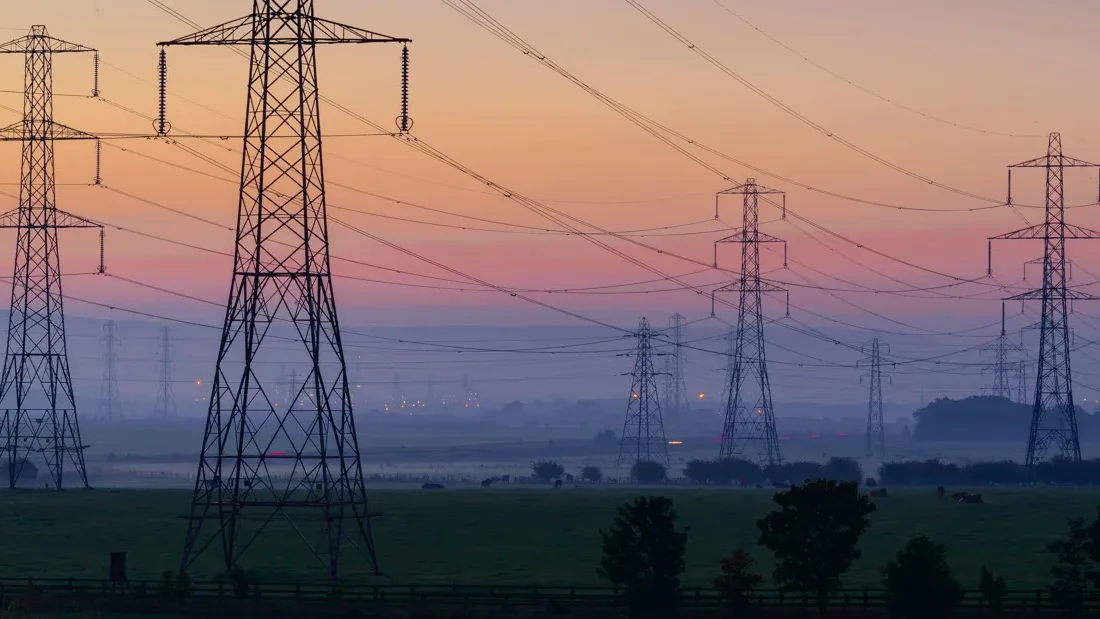
TRANSMISSION: Indigenous tribal nations and advocates file a federal lawsuit seeking to block a southern Arizona section of the SunZia transmission project, saying it imperils cultural resources. (Associated Press)
ALSO: U.S. Rep. Katie Porter, a California Democrat, says the relatively burdensome federal permitting process for new transmission lines is holding back the clean energy transition. (news release)
OIL & GAS:
UTILITIES:
ELECTRIFICATION: Washington state lawmakers revive an effort to ban large utilities from connecting natural gas lines to new residential or commercial buildings, with some exceptions. (KIRO)
ELECTRIC VEHICLES: A Colorado city uses a state grant to purchase a second electric fire engine. (Daily Camera)
CLEAN ENERGY: Republican Utah lawmakers push back on federal moves to replace fossil fuel power plants with clean energy, saying it could harm reliability and increase electricity rates. (Utah News Dispatch)
COAL: A Wyoming county rezones portions of a Powder River Basin coal mine to facilitate repurposing infrastructure for other uses after the operation closes. (WyoFile)
CLIMATE: Hawaii Gov. Josh Green revives a proposal to enact a $25 climate impact fee on visiting tourists, estimating it would generate more than $68 million annually. (Honolulu Civil Beat)
WIND: California agencies publish a draft offshore wind strategic plan identifying suitable development sites and potential impacts. (Riviera)
BATTERIES: An energy storage firm plans to launch programs incentivizing residential solar-plus-battery system deployment in Los Angeles County. (PV Magazine)
Editor’s note: Menlo Park, California, has stopped enforcing its ban on natural gas hookups in new buildings. Friday’s digest mistakenly said Palo Alto was halting enforcement of the rules.